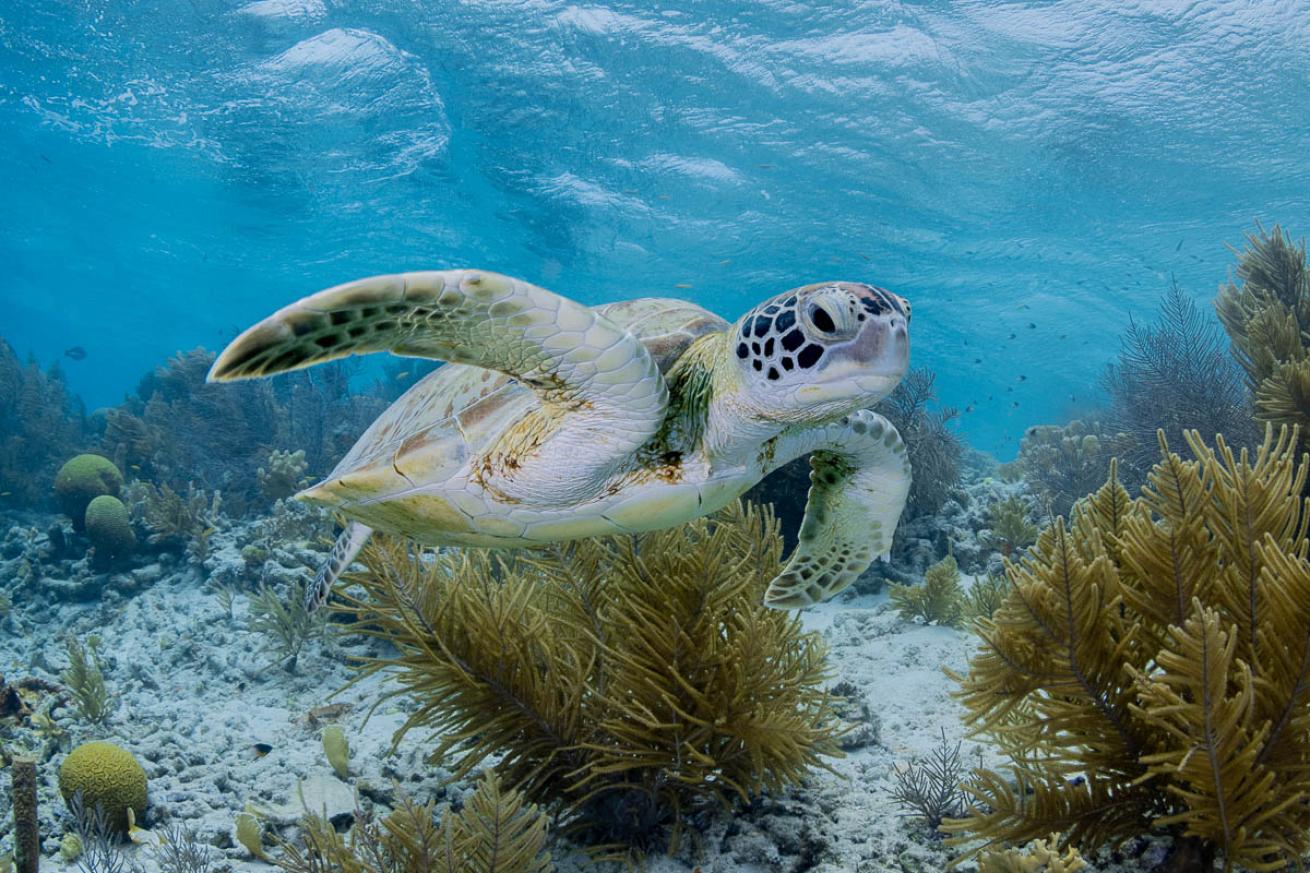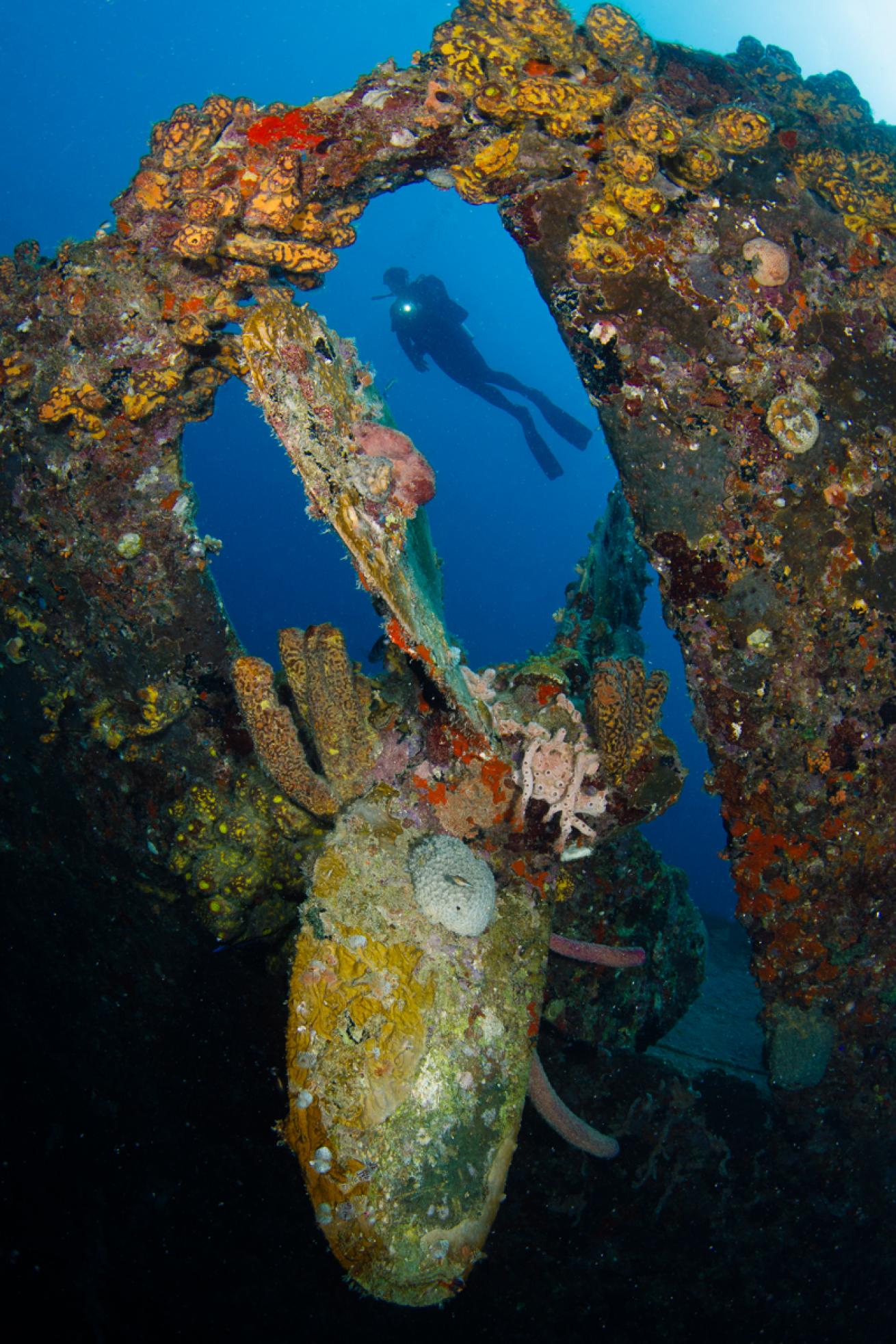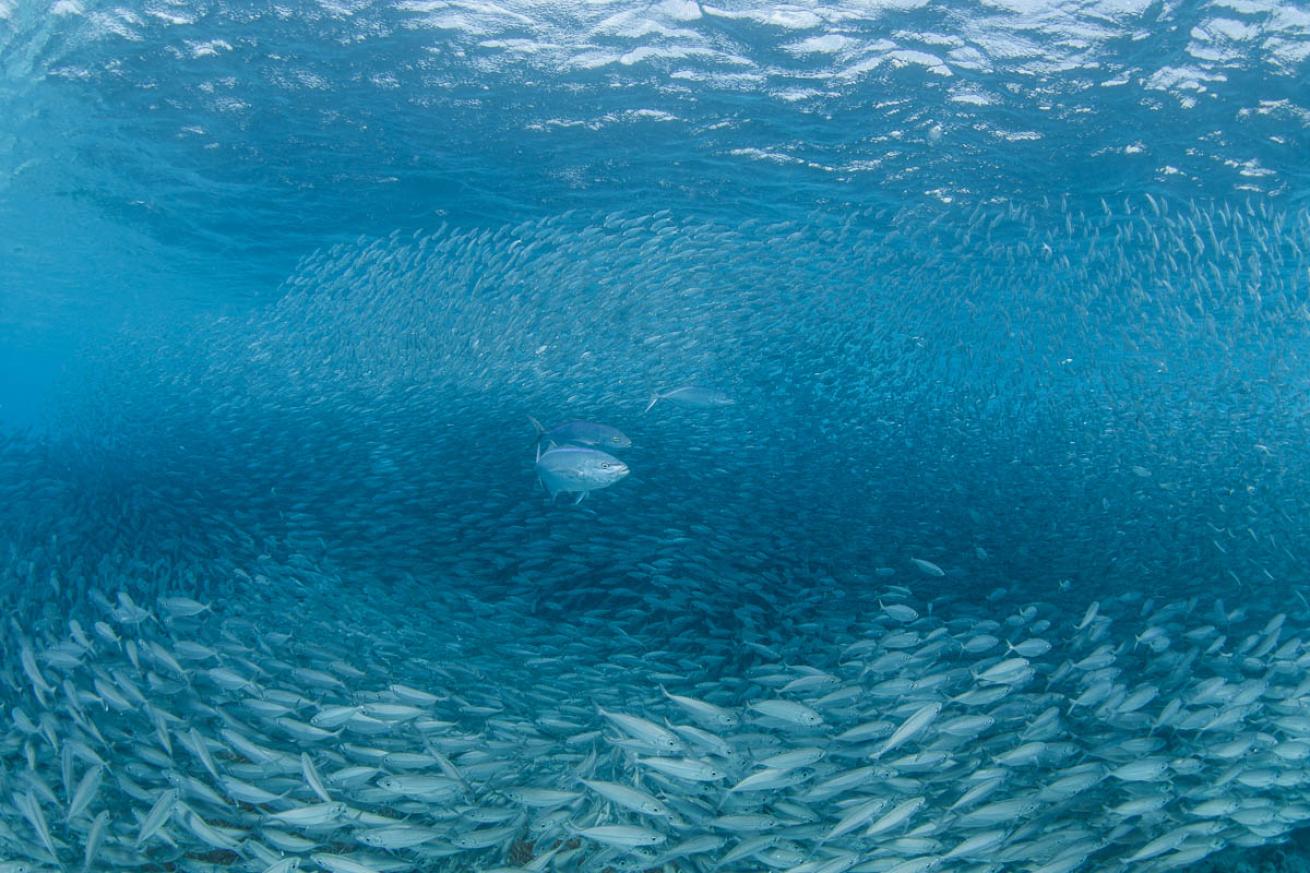My Escape from Reality—Diving the Shores of Bonaire

Allison Vitsky SallmonA hawksbill turtle sweeps through the reefs of Bonaire.
It’s been 538 days since I’ve spotted the curving shore of a tropical island outside of my airplane window, and I’m overwhelmed with emotion as Bonaire comes into view. Judging by the thundering applause of the other passengers on my flight when we touch down on the runway, I’m not alone. Direct flights from the USA only resumed two weeks ago, and the last few months have been a confusing blur of adjusted flight schedules and changing coronavirus testing requirements, but the satisfying final result has settled over the jubilant cabin – we are actually, finally here.
My husband Andy and I move through the entry procedures quickly: passport control-check; negative coronavirus test results-check, then beeline to grab our rental vehicle. Now that we’ve had the Antillean sun on our skin, our immediate goals are to get out of here, grab a quick nap and a snack, and submerge into that blue, clear water we admired so lustily through that tiny window.
It’s not long before we’re on a two-lane road with tanks clanging in the truck bed behind us, headed south towards one of our favorite dive sites in the world, the Salt Pier. This exceptional spot, a spectacular artificial reef plunked into the middle of an outstanding natural reef, has inhabited my dreams for the past 16 months, and I can’t wipe the grin off my face.
The continuation of our good fortune is evident as the structure comes into view – no ships are docked at the end of the jetty, so divers are welcome. Tossing on our gear and performing a quick buddy check, we pick our way across the rocky beach and the narrow ledge at the ocean’s edge, then inflate our BC’s and kick out to the farthest pilings. As we descend next to the end of the pier, we surprise an eagle ray feeding at the edge of the sloping reef drop-off and admire our surroundings.
Oh, how we’ve missed this.

Allison Vitsky SallmonA diver inspects the Hilma Hooker from above.
Weaving our way around the thickly encrusted, colorful pilings, we work our way slowly back towards shore, greeting the angelfish, nesting damselfish, schooling grunts, an octopus and small green turtle as we do. The urgent initial-vacation-dive craving fulfilled, we’re able to shift into a slower, more relaxed pace for the week ahead and approach things more reasonably for the remainder of our trip. Deeper dives are planned for most mornings, including explorations of the wreck of the Hilma Hooker, a cargo carrier-turned-drug runner that lies on its starboard side in nearly 100 ft of water. Here, a cluster of huge tarpon patrol the hulking ship, watching us warily as we investigate the sponge-covered mast and propeller. In the afternoons, we pursue longer, more leisurely dives at shallower sites. One top choice is The Lake, where Bonaire’s renowned double-reef system is on showy display, the parallel ridges of corals, sea fans, and sponges converge twice, forming the namesake “lake”, a large patch of intervening sand. This site is a critter-lover’s fantasy, offering up juvenile fish, colorful shrimp, and blennies, even producing a small frogfish. We’re so enamored of the tiny, pouty creature that we drive north one afternoon, visiting Bari Reef, where we’ve heard a larger specimen has been spotted during recent weeks. Something Special is another favorite, with tiny commensal fish and shrimp living within the crevices, lettuce-slug nudibranchs munching across the corals, and a pair of seahorses disguised among a shallow knot of rope sponge.
No trip to Bonaire is complete without a visit to Klein Bonaire, the tiny islet nestled next to the larger island’s bend. Klein is classic Caribbean reef diving, and since it must be accessed by dive boat, it’s a fantastic, uncrowded indulgence that is well worth our time and money. We visit Forest and Jerry’s Sponge, a pair of dive sites that feature a parade of colorful Caribbean fish and feral tangles of purple vase sponges and vibrant elephant ear sponges lining a towering coral dropoff (at Forest, we also take note of numerous healthy black coral trees). Given the presence of nearby turtle nesting sites, both green and hawksbill turtles are commonly seen here, and our group is treated to several close interactions throughout the day.
On our final morning of diving, we’re faced with a tough choice. We can head up to the northernmost reaches of the island, to dive the famous site 1000 Steps, a site so good that divers happily carry their gear up and down a stretching stone staircase to access it. (In reality, the flight is composed of only 67 steps, but it feels like a lot more after a long dive.) Its healthy brain and pillar corals, moray eels, and friendly local turtles would be a great choice for our farewell. We’ve heard, however, that a baitball has been spotted off of Bachelor’s Beach.
In the end, we can’t resist the draw of something new (especially when that something is off an easy beach entry). At first, we’re not sure we’ve made the right choice; we were able to see the baitfish school when on the surface, but once in the water, it’s not so easy to find it. We spend a frustrating 20 minutes swimming back and forth across an uninspired sandy, rubbly bottom before finally spoting a flash in the distance and kicking like heck towards it.

Allison Vitsky SallmonA baitball welcomes divers back to Bonaire.
Need to Know
Getting ThereBonaire can be reached directly from North America by multiple airlines, or it can be reached via interisland airlines from neighboring islands, such as Curacao and Aruba.
Dive Conditions and Marine Park
Water temperatures generally range from the low to mid 80’s, and visibility can range from 50 to well over 100 feet. Bonaire’s reefs are protected to a depth of 200 ft as a national marine park (the Bonaire National Marine Park is the oldest marine reserve in the world and was established in 1979); visiting scuba divers should expect to pay a $45 marine fee to explore these pristine waters. This can be paid prior to arrival at https://stinapa.bonairenaturefee.org
Covid-19 Requirements
The requirements to visit Bonaire are fluid and can be followed at bonairecrisis.com
Dive Operators










